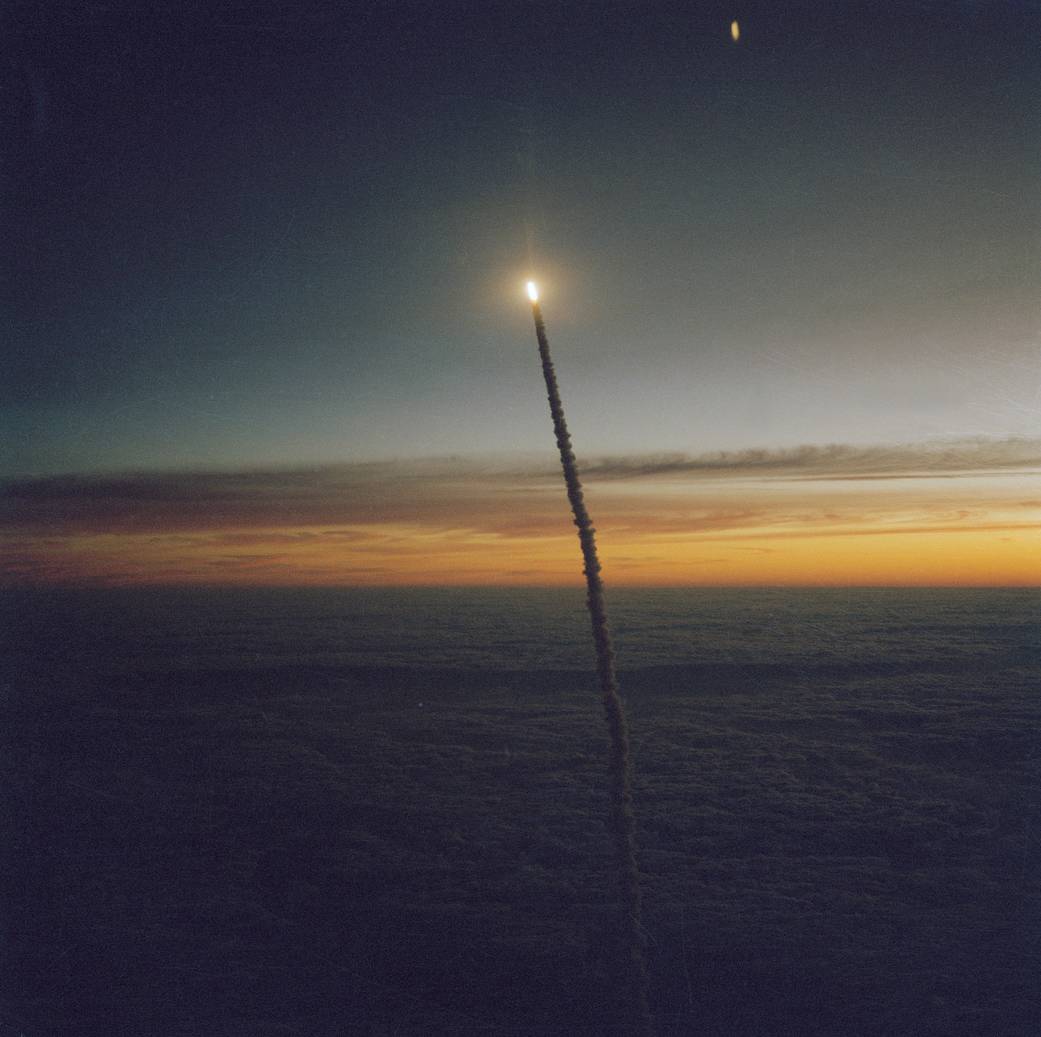
A Florida dawn scene on Oct. 5, 1984 forms the backdrop for the climbing Space Shuttle Challenger, its two solid rocket boosters and external fuel tank, launched on the eight-day STS-41G mission. The scene was photographed by astronaut Paul J. Weitz, who was piloting the Shuttle training aircraft (STA).
Crewed by Robert L. Crippen, Commander; Jon A. McBride, Pilot; Mission Specialists Kathryn D. Sullivan (now NOAA administrator), Sally K. Ride, David C. Leestma and Payload Specialists Marc Garneau of the Canadian Space Agency and Paul D. Scully-Power, the mission’s objectives included the deployment of the Earth Radiation Budget Satellite and the demonstration of the Orbital Refueling System by Sullivan and Leestma during a spacewalk.
On this mission, Sullivan became the first U.S. woman to perform a spacewalk. Marc Garneau became the first Canadian astronaut to fly to space. The shuttle’s crew of seven was the largest ever to fly on a single spacecraft at that time, and STS-41G was the first flight to include two female astronauts. STS-41G completed 132 orbits of the Earth in 197.5 hours, before landing at Kennedy Space Center, Florida, on Oct. 13.
Image Credit: NASA

























